
With its stunningly beautiful and diverse landscapes and evocative urban centers brimming with cultural heritage in-between, there are so many places to visit in Vietnam, it’s hard to decide. Hopefully our top ten best places to visit in Vietnam suggestions will inspire your decisions when visiting one of Southeast Asia’s most captivating new destinations.
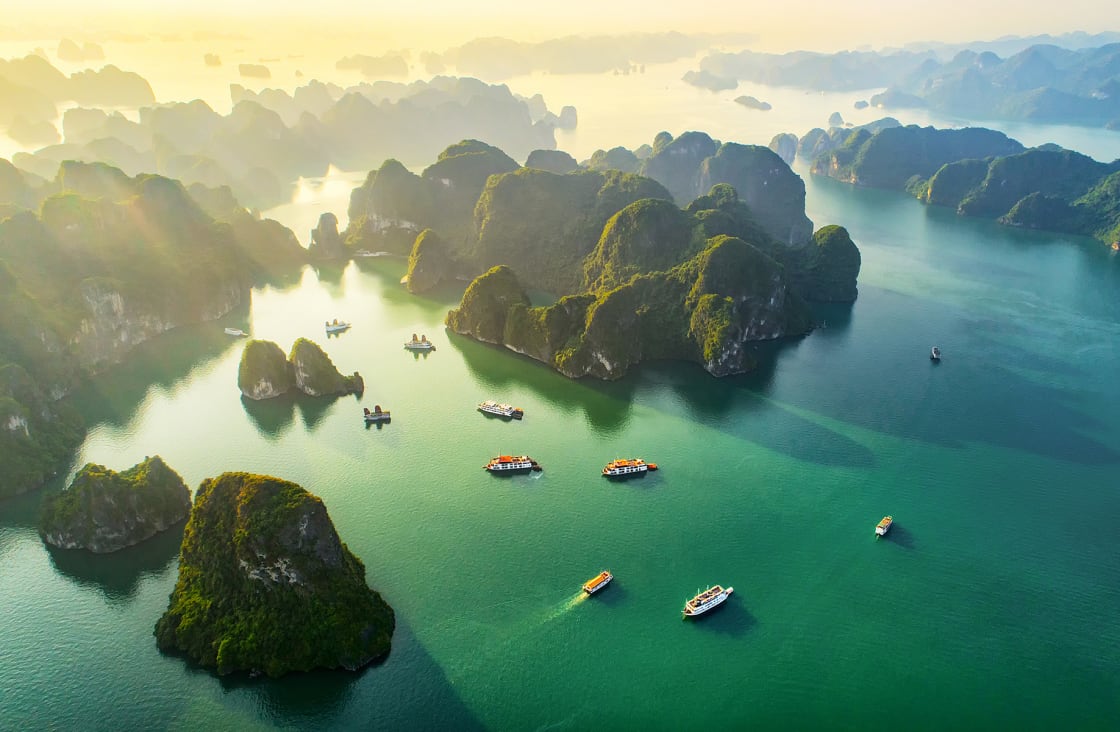
One of the planet’s most spectacular natural wonders and a World Heritage Site, Halong Bay is on everyone’s bucket list when traveling in Vietnam. Within this vast ‘Bay of Descending Dragons,’ more than 2,000 limestone islands and islets magically rise out of the Gulf of Tonkin’s emerald-hued waters in northern Vietnam. Halong Bay overnight luxury cruises are the grandest way to experience this ethereal seascape: leisurely gliding past forested karsts, stopping-off to explore mythical caves and kayaking to hidden lagoons.
If you seek to avoid the crowds in this highly popular destination, sail on to Halong Bay’s southern extension and extraordinarily beautiful Lan Ha Bay, a relatively new tourism destination offering a more remote and tranquil voyage. In addition to the equally stunning scenery of its illustrious neighbor, Lan Ha is home to dazzling coral beaches and Cat Ba Island – a nature wonderland of rugged mountains and primeval rainforest, perfect for trekking and spotting diverse flora and fauna.
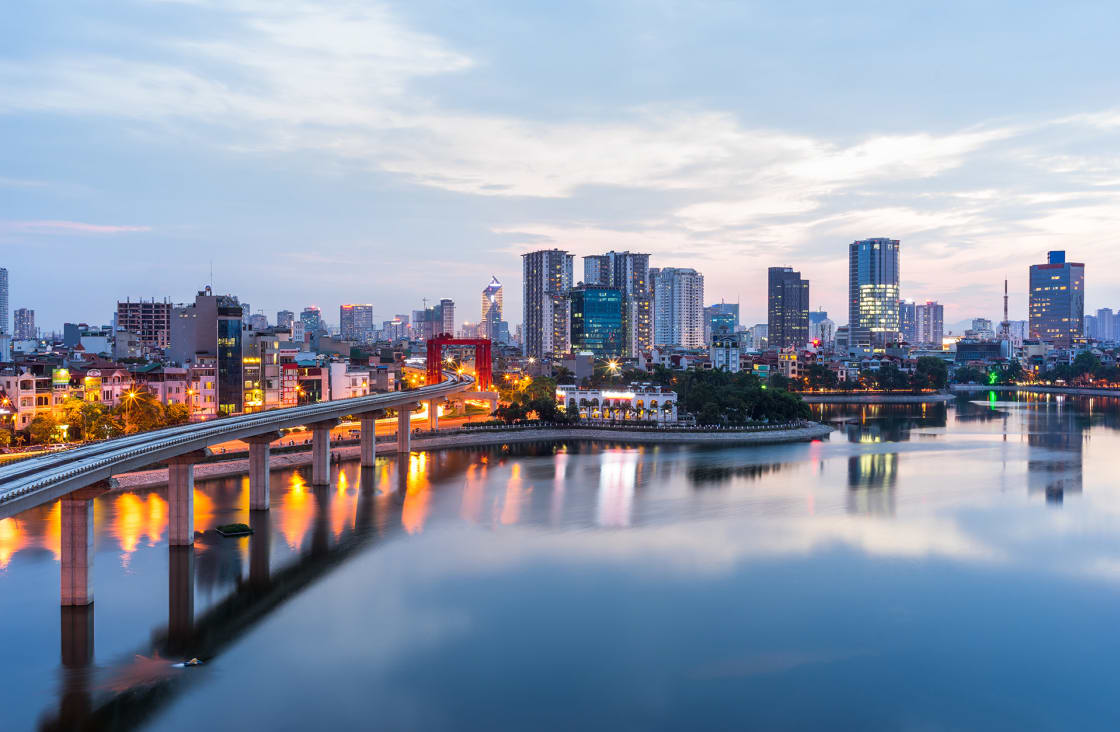
Nestled for a thousand years beside the Red River, the capital Hanoi may now be rapidly developing, but hasn’t lost its evocative charm, unique cultural identity and inherent traditions, and is still regarded as one of Asia’s loveliest cities.
Historic legacies linger in Hanoi’s distinct districts, bursting with key attractions and significant sites. Remnants of the French Indochina-era – shaded parks, lakes, tree-lined boulevards and elegant colonial villas – are especially evident in this former ‘Paris of the Orient,’ while the narrow bustling streets of the Old Quarter reveal a compact ancient merchants neighborhood.
On your tours through Hanoi, don’t miss Ho Chi Minh’s Mausoleum in Ba Dinh Square, Hanoi’s diplomatic epicenter, or the 11th century Temple of Literature, the many Chinese-style pagodas, and a water puppet show. Stroll around legend-strewn Hoan Kiem Lake, at the very heart, literally, of this enchanting city. Hanoi is also renowned for its street food – some of the world’s finest – atmospheric cafés, arts culture and excellent museums and beyond, is gateway for Halong Bay, the mountainous north and Red River Delta.
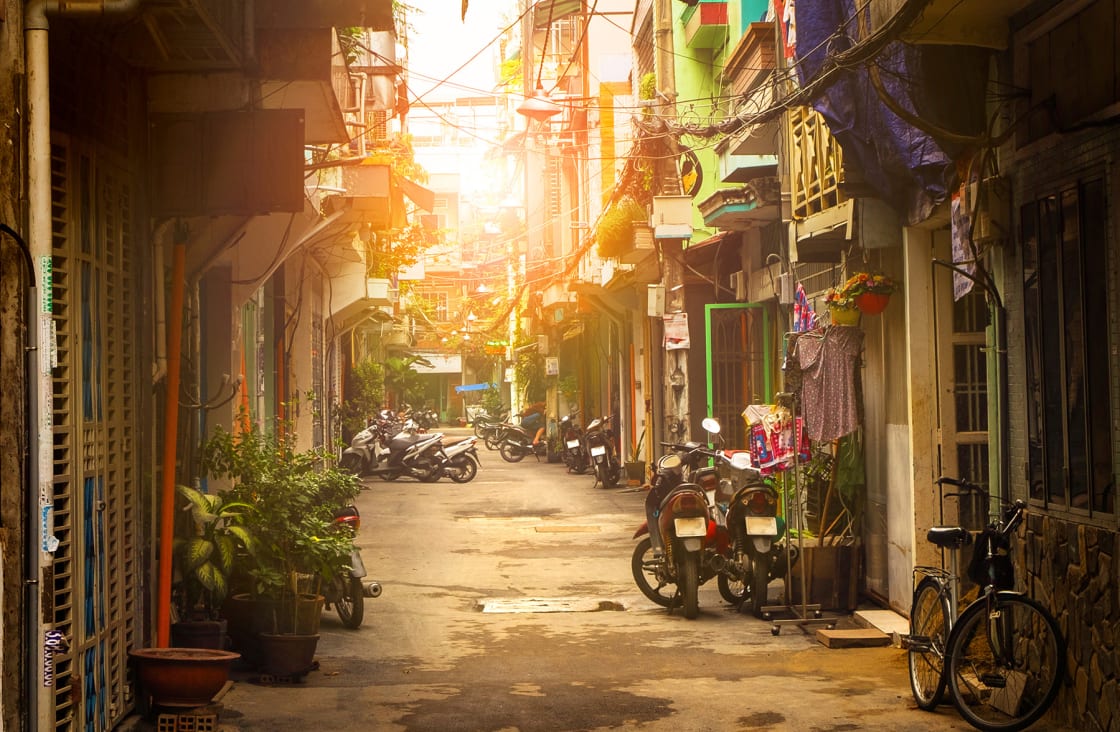
In Vietnam’s tropical south, Ho Chi Minh City (still called Saigon in the south) is the nation’s largest, most cosmopolitan city and its dynamic commercial powerhouse. Despite embracing the future with an infectiously buzzing energy, legacies of momentous history and a unique Saigonese character are still evident. Not to be missed on your Vietnam vacations!
Most of this mesmerizing city’s key attractions, shopping and main entertainment venues are concentrated in central District One, especially the magnificent French Indochina-era landmarks such as the Notre Dame Cathedral. Other Saigon highlights include sampling the amazing street food, exploring sprawling Chinatown (Cholon) home to the city’s most exquisite – and oldest – pagodas and temples and cruising the Saigon River. Or simply soak-up the atmospheric café culture. Should you need a break from the insane traffic, this amiable city makes a convenient launchpad for Phu Quoc Island, Mekong Delta and the historic Cu Chi Tunnels.
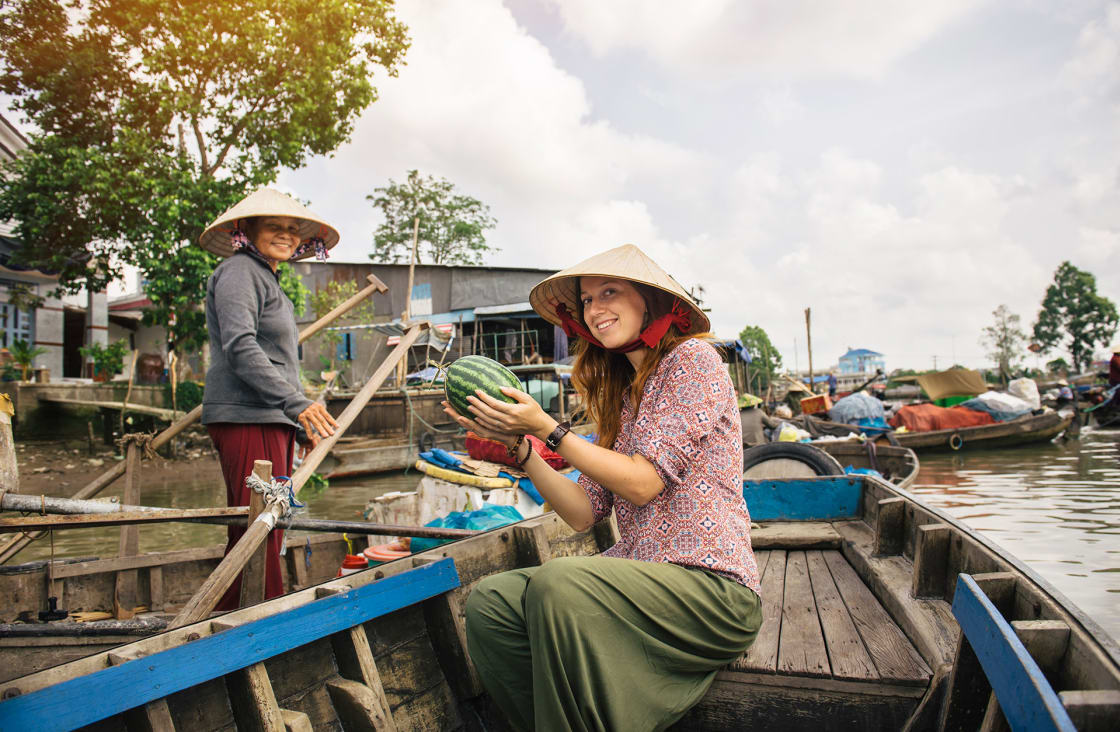
Two hours’ drive west of Ho Chi Minh City brings you to one of Vietnam’s friendliest and most picturesque regions, the Mekong Delta. This lush ‘Delta is totally dominated by – and dependant on – the mighty Mekong River, which branches out into a network of waterways and tributaries. As Vietnam’s most productive agricultural area, the intensively cultivated landscape brims with rice paddies, banana and coconut plantations and tropical fruit orchards, dotted with farming communities and Khmer temples.
Sampan rides along the myriad of foliage-engulfed canals leads to riverside stilt-houses and cottage industries, where products like coconut candies are traditionally hand-made. Along the broad Mekong River, deluxe vessels cruise northwards to Cambodia, while longtail boats weave in amongst iconic floating markets. The pancake-flat ‘Delta is ideal for leisurely cycling tours to farmlands and secluded villages, where you can overnight at rustic family homestays.
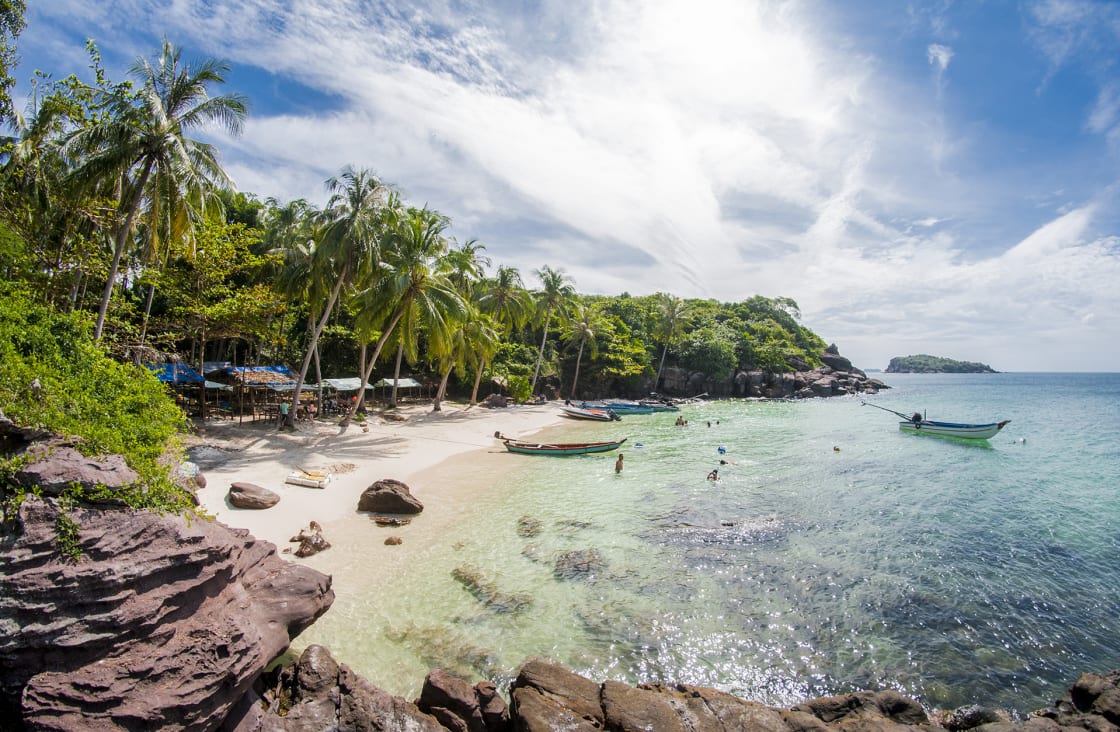
Vietnam’s extensive coastline boasts countless beautiful beaches, making a fantastic break from sightseeing. However, for the ultimate tropical paradise and some of Vietnam’s finest beaches, head to Phu Quoc Island, at Vietnam’ southernmost point, in the Gulf of Thailand. Vietnam’s largest island is in stark contrast to Ho Chi Minh City, just an hour’s flight away, with its ruggedly beautiful and mountainous terrain covered with virgin rainforest and palm-fringed white sand beaches.
The relatively untouched northern parts are protected by a UNESCO-listed National Park – ideal for hiking trips.
Once a remote prison island camp, today, Phu Quoc is a popular international destination, especially along the bustling west coast beaches, which boast Vietnam’s most magnificent sunsets. There is also excellent snorkeling and diving in the southern An Thoi archipelago, where transparent turquoise waters reveal abundant marine life and coral reefs.
Phu Quoc is also famed for its fresh, succulent seafood and world-class peppercorns and fermented fish sauce – the latter’s factory production tours are a visitor favorite.
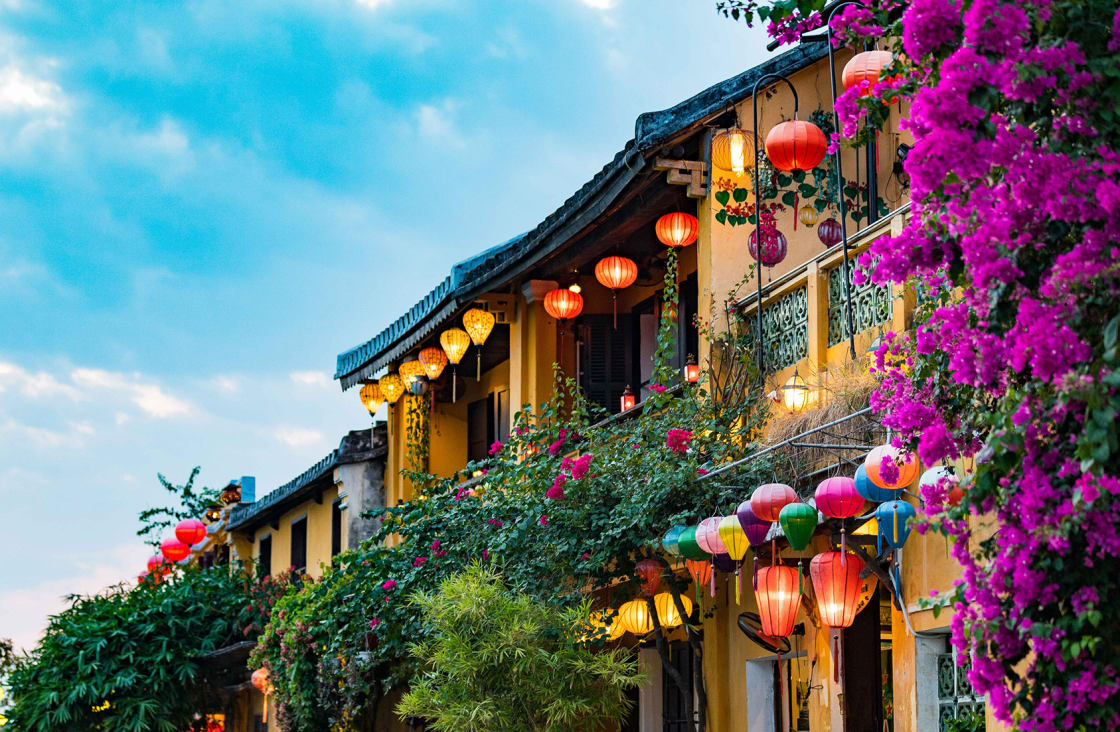
Located in Central Vietnam, Hoi An was once a thriving Silk Road trading port, dating back to the 16th century. Today, revered as one of Southeast Asia’s oldest towns and a World Heritage Site, charming Hoi An is one of Vietnam’s top drawcards and an exquisite tours destination. Set alongside picturesque Thu Bon River, the narrow streets of its beautifully preserved Ancient Town are crammed with centuries-old cultural treasures, historic sites and quaint buildings, a hybrid of the port’s Chinese, European and Japanese architectural legacies.
As a compact pedestrianized zone, all these wondrous attractions, including Chinese shophouses and French colonial-era mansions, are easily walkable. Don’t miss the open-air cafés and restaurants lining the riverbanks, perfect for sampling local culinary delights and the full moon lantern festival, when the ancient streets are aglow with multi-colored silk lanterns. Beyond, take a bicycle ride out to the surrounding rice paddies and relaxing beaches.
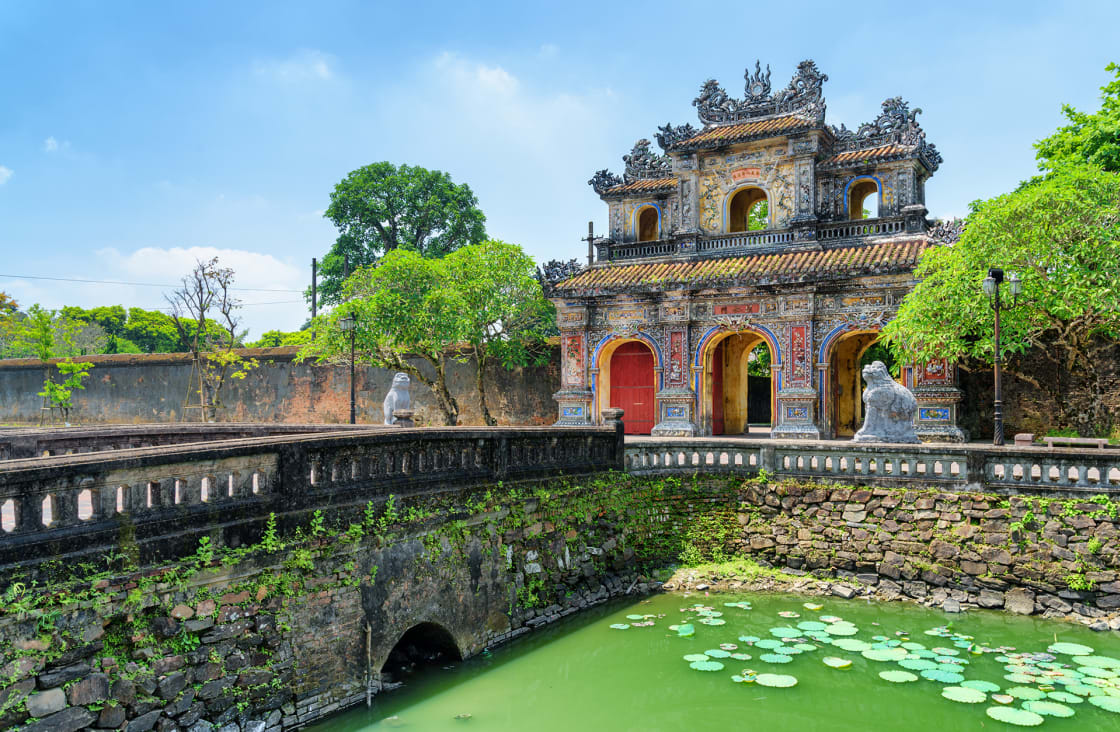
North of Hoi An, the royal city of Hue is arguably one of Vietnam’s most underrated destinations. Which is surprising, as this was once Vietnam’s capital and home to a dynasty of Nguyen Emperors from 1802 to 1945. Many still regard this amiable city, set alongside the Perfume River, as Vietnam’s historical and cultural epicenter. Such is the significance of Hue’s majestic past and imperial legacies, a complex of relatively well-preserved ancient monuments and relics are collectively listed as a UNESCO World Cultural Heritage Site.
Additionally, Hue’s unique royal court music is recognized as a World Intangible Heritage and the delicious and unique imperial repertoire of dishes ranks as some of Vietnam’s finest cuisine. And as the nation’s center of Buddhism, this amiable city boasts many exquisite pagodas. Thus, Hue offers visitors much to see and do. Highlights cover the magnificent 19th century Imperial Citadel and ‘Dragon Boat’ rides along the Perfume River, disembarking at historic sites such as the iconic 17th century Thien Mu Pagoda and incredible royal mausoleums lying hidden amid the hills.
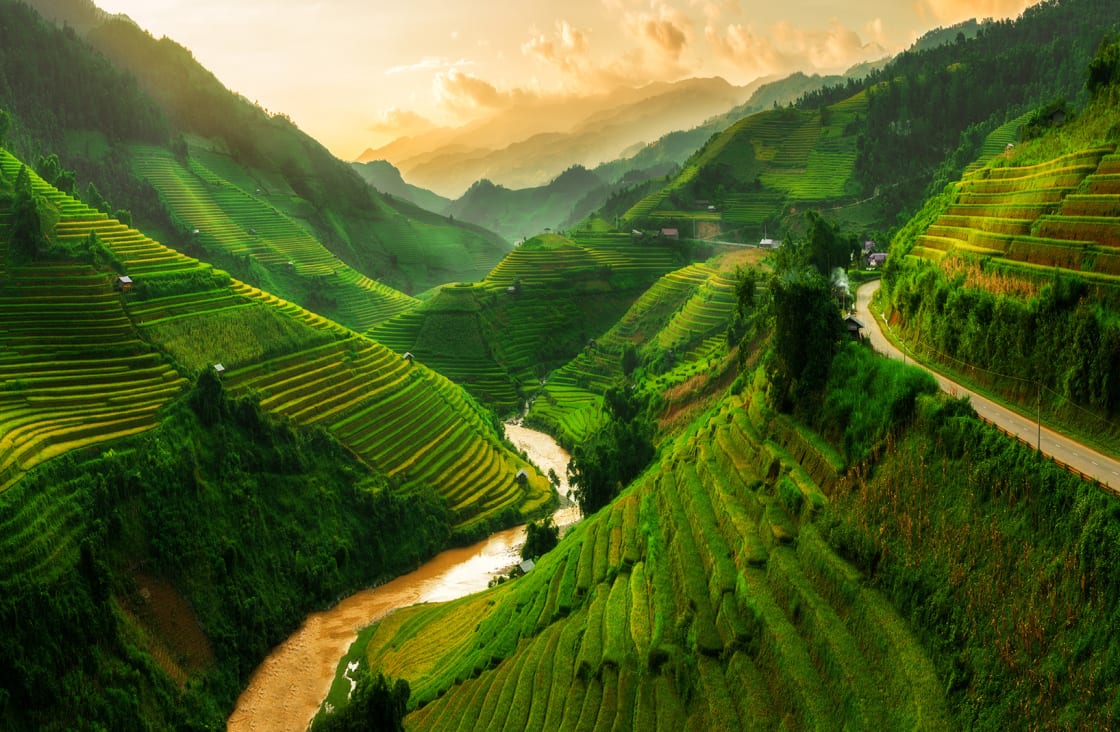
Extending towards the Chinese border, Vietnam’s northern mountainous regions boast not only some of Southeast Asia’s most dramatically beautiful landscapes but are also home to many of Vietnam’s fifty-plus ethnic minority groups. The most popular tourist base for this breathtaking region is Sapa, a former French hill station in the upper northwest regions (reached by overnight train from Hanoi). This charming alpine-style town comes surrounded by sweeping valleys, terraced rice fields and mist-shrouded peaks.
One of the main reasons for a Sapa stay is trekking through verdant paddies and forested hills to remote ethnic minority villages – homestays in rustic stilt-houses can be arranged. You can also ascend Mount Fansipan, the ‘Roof of Indochina,’ towering over Sapa, either by an arduous climb or via the world’s longest cable-car system.
Further afield, head off-the-beaten track by four-wheel drive or motorbike deep into spectacular mountainous terrain, including the lesser visited Bac Ha town, famed for its eponymous weekend market and conical hill countryside.
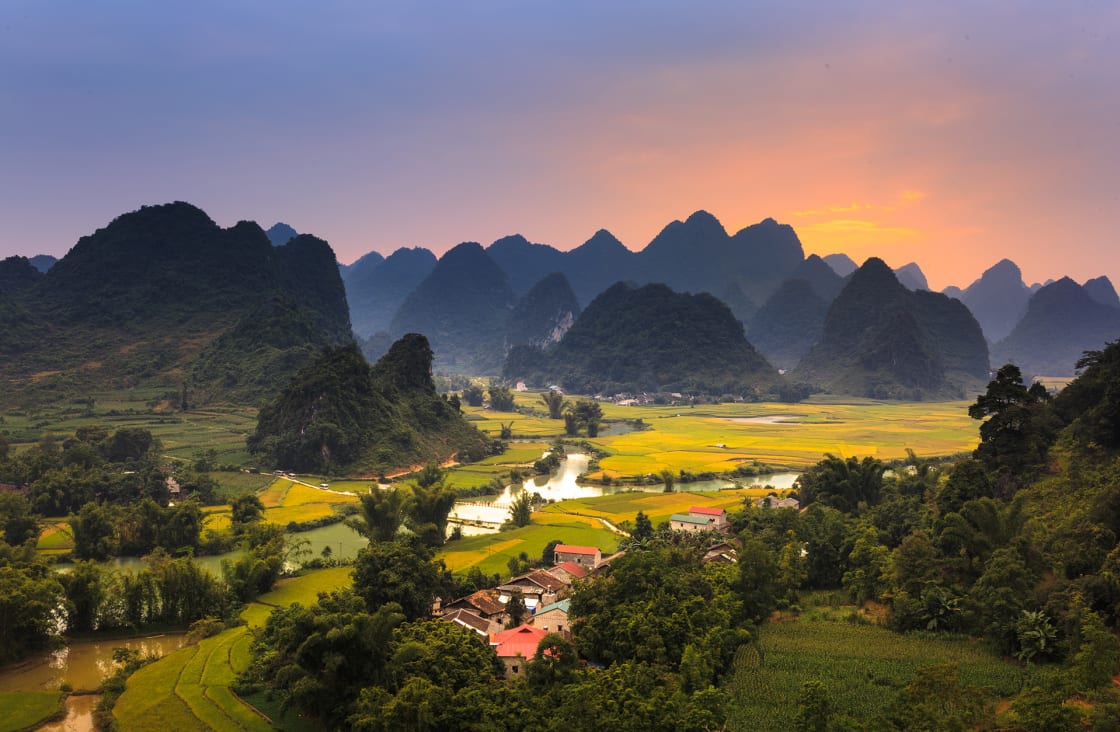
While most tourists flock to Sapa and the north-west, few make it to the more remote upper north-east region, which includes the lesser-known Ha Giang and Cao Bang provinces. Traveling to and around this area is more challenging (a private tour is recommended), but visitors are rewarded with what many regard as Vietnam’s most jaw-dropping scenery, far from the madding crowds.
Expect deserted roads tightly coiled around soaring forested mountains, stacked rice field terraces and isolated hill tribe communities that rarely see foreigners. Adventurers will adore this region, with its far-flung trekking, motorbiking road trips on the legendary ‘Ha Giang Loop,’ mountaineering and rock climbing. Further south, you can boat or kayak across magnificent Ba Be Lakes, Vietnam’s largest natural lake and an utterly tranquil spot within Ba Be National Park.
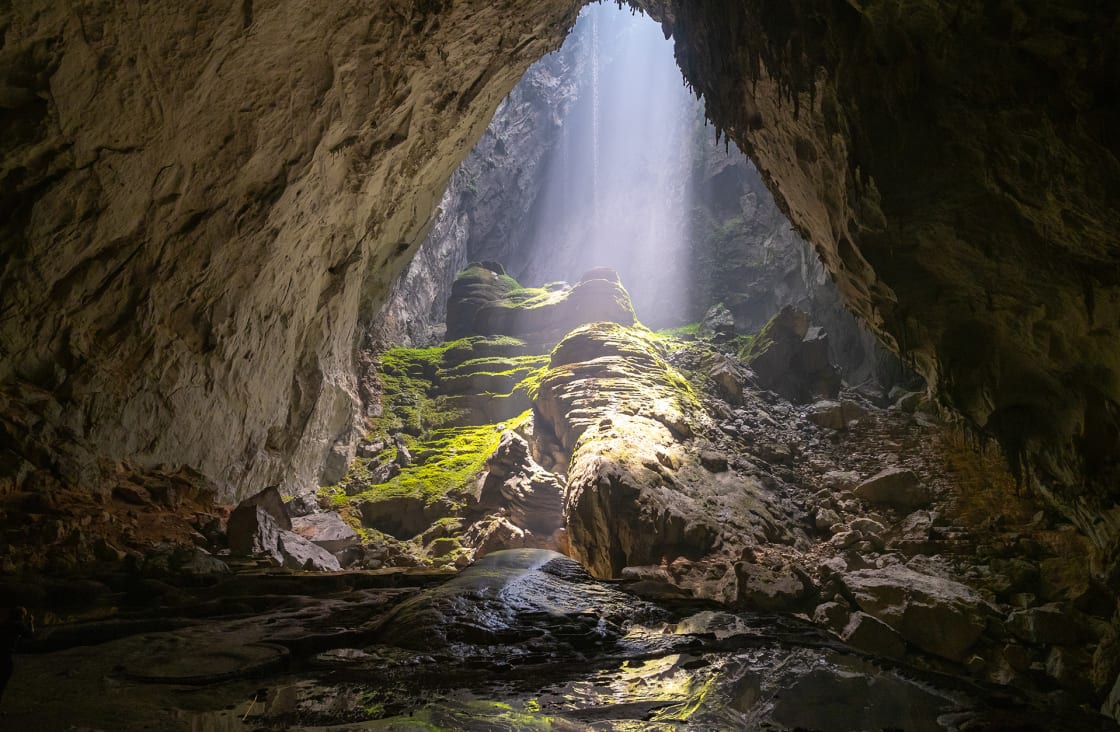
Vietnam boasts around 30 exceptional national parks; there are too many to mention but Phong Nha-Kẻ Bàng National Park is a stand-out. Shouldering the Laos border in north-central Vietnam, this park is one of Indo-Pacific’s most important eco-regions, with rugged mountainous terrain covered in dense rainforests, home to endangered wildlife and minority villages. However this World Heritage Site is best known for its massive limestone karst formations – some of Asia’s oldest – containing around 300 caves including world-famous Hang Son Doong, the planet’s largest cave.
This vast network of caves reveal grottoes and underground rivers and pools, a subterranean playground for caving, boating and zip-lining, while above ground, jungle trekking and mountaineering opportunities abound. As a relatively new tourist destination, the caves are still pristine and the crowds haven’t arrived – yet.
While Rainforest Cruises aim to provide accurate and up-to-date information, we make no representations as to the accuracy or completeness of any information herein or found by following any link on this site. Rainforest Cruises cannot and will not accept responsibility for any omissions or inaccuracies, or for any consequences arising therefrom, including any losses, injuries, or damages resulting from the display or use of this information.




